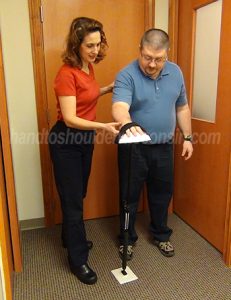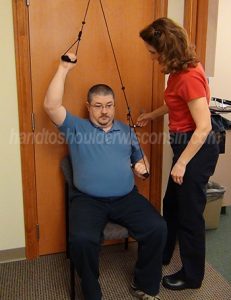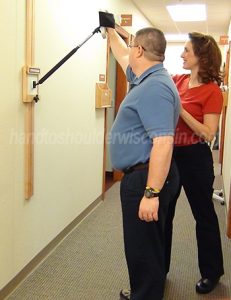Our orthopedic specialists are trained to treat shoulder impingement syndrome. The team at Hand to Shoulder Center of Wisconsin explains the symptoms, diagnoses the syndrome, and provides both non-surgical and surgical treatment options. Contact us today for any questions regarding shoulder impingement syndrome.
Shoulder Impingement Syndrome (SIS)
Shoulder impingement syndrome (SIS) is a condition caused by irritation of the tendons in the rotator cuff. Impingement causes pain, restrictions in motion, and decreased shoulder function especially with overhead activities.
The shoulder is a complex structure. It’s made up of three bones and is surrounded by a number of muscles, ligaments, and tendons. The rotator cuff is a muscle tendon unit that provides for critical shoulder motion and strength. With mild symptoms of shoulder impingement, often the pain can be ignored, however, as the tendons become more unhealthy, the pain intensifies. Activities and sleep typically becomes more difficult. With time, chronic shoulder impingement can lead to further structural damage by weakening and tearing the rotator cuff tendons.
Shoulder impingement symptoms can develop with trauma or over time without cause. Common causes of shoulder impingement from trauma include falls and traction injuries. Shoulder impingement can be caused by repetitive overhead activities. Shoulder impingement syndrome is most common in an aging population.
Treatment for Shoulder Impingement
The orthopedic physicians at Hand to Shoulder Center of Wisconsin perform a thorough medical evaluation. Health history is discussed along with all prior upper extremity injuries. A physical examination by the physician is completed on the shoulder.
X-rays are commonly ordered to evaluate the joint. A MRI may also be needed to evaluate for a rotator cuff tear.
For mild signs of shoulder impingement, conservative treatment is warranted; moderate rest, ice, and anti-inflammatory medications along with shoulder impingement exercises designed by a licensed occupational or physical therapist may be recommended. The rehabilitation program will focus on pain relief, restoring range of motion, and overall function. For additional short-term relief, a steroid injection may sometimes be recommended. At Hand to Shoulder Center, a licensed therapist works directly with you in designing and implementing a rehabilitation program that fits your physical needs (Fig 1-3).
 Figure 1: A rehabilitation program is designed to fit your physical needs |
 Figure 2: A rehabilitation program is designed to fit your physical needs |
 Figure 3: A rehabilitation program is designed to fit your physical needs |
In more severe cases, shoulder impingement surgery, often called shoulder subacromial decompression, may be recommended. Depending on the severity of the shoulder condition, surgery is performed by using arthroscopic or open techniques. Typically, the surgery is an outpatient procedure allowing the patient to return home the same day. Surgery is performed at Woodland Surgery Center, adjacent to Hand to Shoulder Center in Appleton, WI, and all three Fox Valley hospitals.
During arthroscopic surgery, small incisions are made in the shoulder region. A special instrument called an arthroscope is inserted through an incision. Small surgical instruments designed for joint-work are inserted to perform the surgical procedure. Arthroscopic techniques allow the surgeon to correct abnormalities involving most shoulder structures, including the rotator cuff, labral tissues, and biceps.
During the recovery period, the patient works with a licensed therapist to develop an exercise program to regain strength and range of motion in the shoulder and arm.